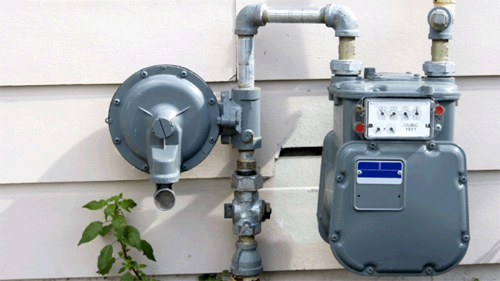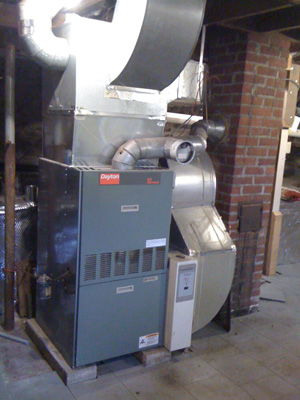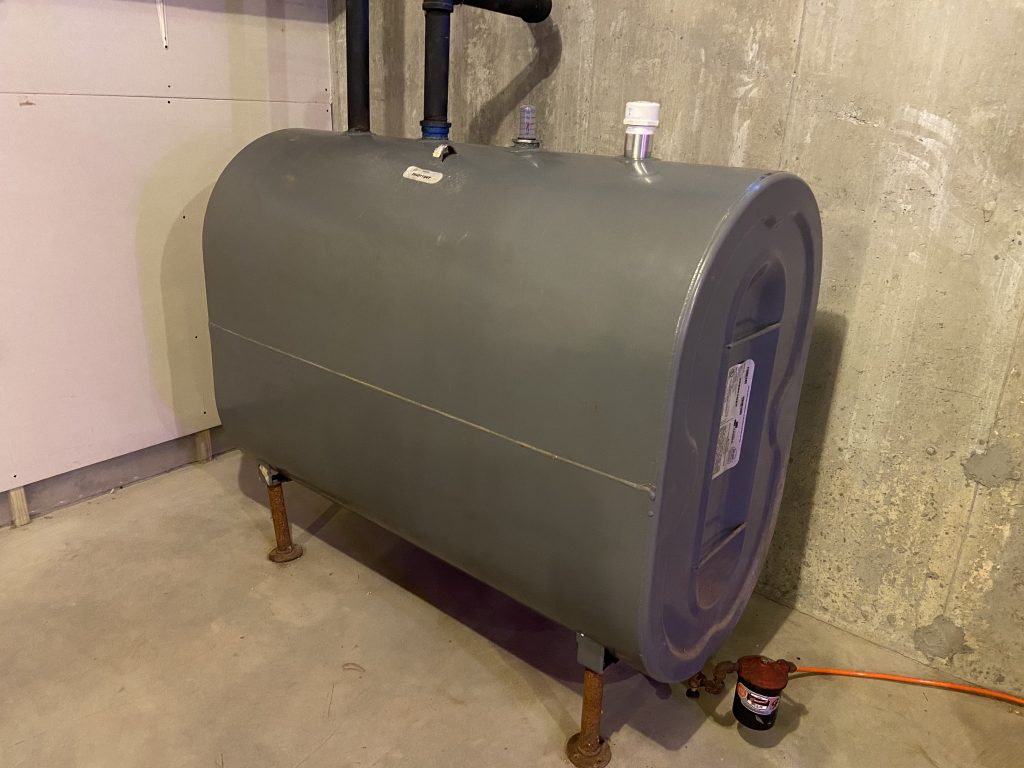Usually, once your furnace hits the ripe age of 30 years old, it means it’s time to replace it. While your annual maintenance can be incredibly helpful for maintaining your home’s HVAC system, there will come a time when you will eventually need to replace it. If that time is now, or if it’s coming over the horizon, please follow these steps to help you choose a new furnace!
What is a Furnace?
A furnace will convert home heating oil, propane, and/or natural gas into heat and will then transfer the heat through the ductwork into the rooms of your home. Your furnace will normally consist of:
- The Burner: This will normally combine the air, fuel, and flame that will ignite the fuel to create heat.
- Heat Exchanger: This takes the heat from the furnace’s combustion chamber (the location where the fuel burns) and will transfer the heat to the clean air that will then circulated into the home.
- Blower: The blower will take air from the inside of the house, and push it through to the heat exchanger and will then blow the hot air out of the furnace and into the home.
When going through the process of choosing a new furnace, we recommend following the below steps.
Step 1: Choosing a Fuel Type
Most of the time, we don’t have much of a choice when it comes to deciding what type of fuel we use for our home. You’ll be considered one of the lucky ones if you have natural gas plumbed in from your street. Be sure that you hook into it as soon as possible and get yourself a gas furnace.

If you don’t have natural gas in your street, then don’t fret. The price differences between oil heat and natural gas are very slight. While heating oil is a bit more expensive, heating oil tends to be a bit more accessible.

When replacing your furnace, the most common approach is to continue using the fuel source that you had used before needing a switch. For example, if you use propane heat, stick with propane. The same goes for heating oil and natural gas. However, when it comes to getting a new furnace, a majority of propane dealers will encourage you to make the switch to propane when you need a new furnace. Don’t do this because THIS IS MORE PROFITABLE FOR THEM. You’ll end up paying significantly more money in the long run to heat your home rather than with heating oil. Additionally, if they tell you that the price per gallon is lower than heating oil, then remember that: it takes 1.35 gallons of propane to generate the same amount of heat as one gallon of heating oil.
When choosing a new furnace, deciding to stick with your current fuel source is usually the best idea. We go a little bit more in-depth about the differences between propane and heating oil in our blog post here.
Step 2: Choosing a Brand
One of the nice things about oil-fired furnaces is that there aren’t a lot of options to choose from. Whichever system you decide to buy, you’ll only end up having one or two burner options that you’ll be able to choose from, but they are all good choices. Additionally, if the burner that you choose stops working in the winter, the technician who will come to fix it, and will have the correct parts to fix it.
However, this is unfortunately not the case when it comes to natural gas furnaces. Natural gas furnaces are usually built and sold all across the country. This results in too many types of these furnaces in particular and technicians are unable to service every single one with the parts that they have in their trucks.
When you choose your brand, you will get what you pay for. If you are buying this furnace and intend to use it over the long term, I recommend ThermoPride or a comparable high-end furnace. If you are purchasing this for a rental property that you’re only going to own for a few years, then the best-priced furnace available is your best choice.


Step 3: Choosing a Size
Choosing a size for your furnace is pretty easy if you look at what your current system’s size is. A replacement that is the same size as your current system will be the easiest and give you the least amount of trouble. However, things might’ve changed since your house was originally built. Was there an extension put into the home? Did you upgrade the windows and siding? Was the system sized properly, to begin with?
All of these factors can lead to your current system being under or over-sized. A knowledgeable and competent HVAC contractor will usually ask you a lot of questions about your home. Some of those questions will usually include:
- What’s your home’s square footage?
- How tall are the walls?
- How many windows does each floor have?
- What are the windows’ dimensions?
- Are they single-pane or dual-pane windows?
- How well insulated is your home?
If your HVAC technician asks for just the square footage of your home to figure out the size of your furnace, it’s time to find a new HVAC technician. There are a lot more factors that will contribute to loss of heat other than the square footage of your home.

Step 4: Considering Other Factors
The biggest factor in replacing your furnace is price because replacing your furnace can be expensive. The whole job of replacing your furnace can cost anywhere from $8k-$10k depending on the company who does it. Most companies will usually offer 0% financing for these types of jobs in particular. That might be something that you’ll want to consider for additional work other than replacing your furnace. Some examples of this are replacing your oil tank or adding central AC.
Putting all of these jobs together can help bring the total price down. But, it can also help you take full advantage of the 0% financing – for the entire project.

New Furnace Final Thoughts
Getting a new furnace is super important if it’s time to upgrade. They will help make sure that your home is being properly heated regardless of whichever form of heat you choose to use to heat your home. When choosing a new furnace for your home, think about whether or not you will be selling the home and what your potential buyers might be looking for.
While it’s more expensive up-front, a high-end furnace can pay for itself over the long run. Providing you with effective heating that is incredibly more reliable over the long run. Just make sure to get your furnace tuned up at least once a year to keep it in peak condition.
Happy Heating,
Hunter



